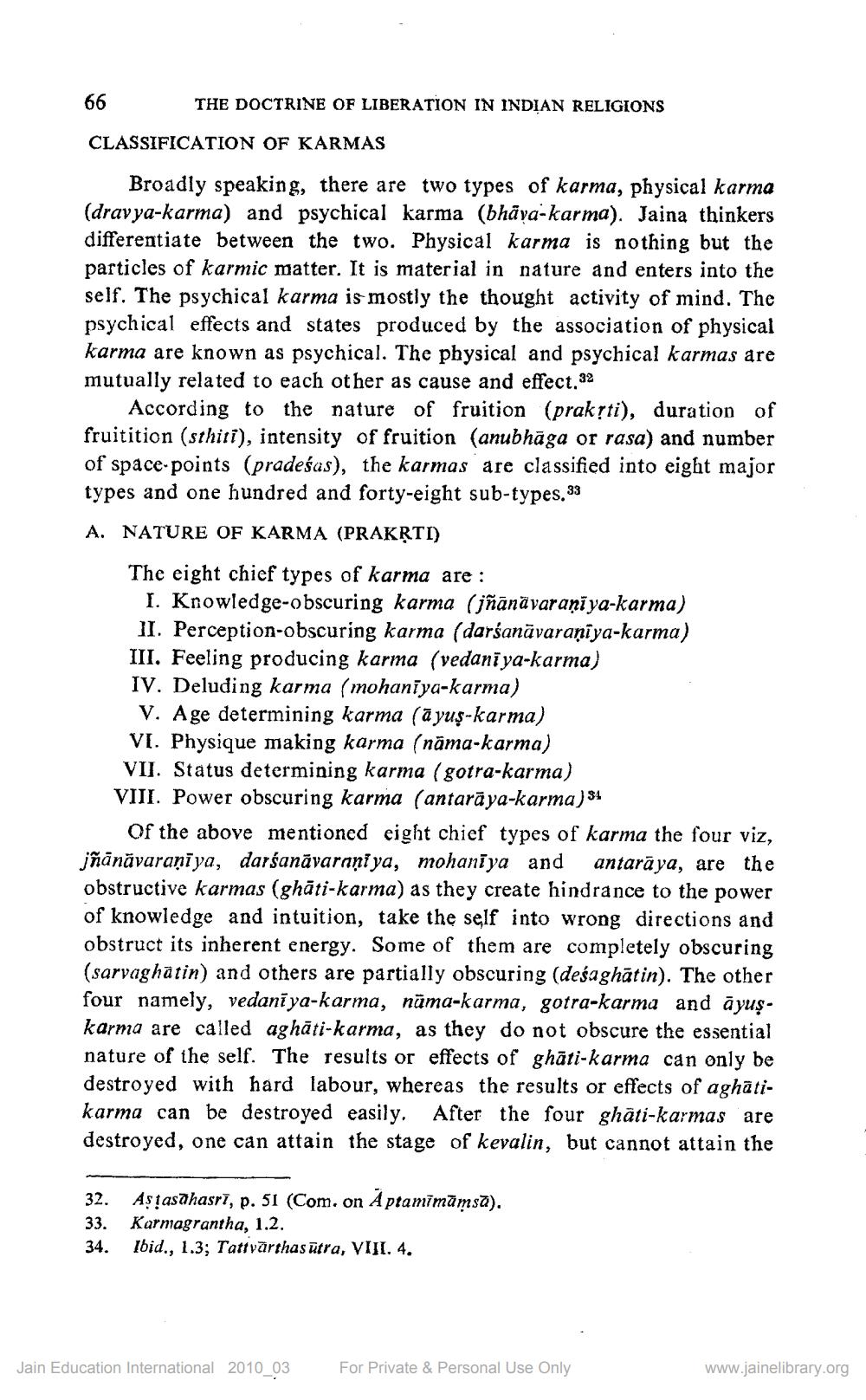________________
66
THE DOCTRINE OF LIBERATION IN INDIAN RELIGIONS
CLASSIFICATION OF KARMAS
Broadly speaking, there are two types of karma, physical karma (dravya-karma) and psychical karma (bhāya-karma). Jaina thinkers differentiate between the two. Physical karma is nothing but the particles of karmic matter. It is material in nature and enters into the self. The psychical karma is mostly the thought activity of mind. The psychical effects and states produced by the association of physical karma are known as psychical. The physical and psychical karmas are mutually related to each other as cause and effect.32
According to the nature of fruition (prakṛti), duration of fruitition (sthiti), intensity of fruition (anubhaga or rasa) and number of space-points (pradeśas), the karmas are classified into eight major types and one hundred and forty-eight sub-types.33
A. NATURE OF KARMA (PRAKṚTI)
The eight chief types of karma are:
I. Knowledge-obscuring karma (jñānävaraṇīya-karma) II. Perception-obscuring karma (darśanavaraṇīya-karma) III. Feeling producing karma (vedaniya-karma)
IV. Deluding karma (mohaniya-karma)
V. Age determining karma (ayuş-karma)
VI. Physique making karma (năma-karma) VII. Status determining karma (gotra-karma) VIII. Power obscuring karma (antaraya-karma)
Of the above mentioned eight chief types of karma the four viz, jñānāvaraṇīya, darśanāvaraṇīya, mohaniya and antaraya, are the obstructive karmas (ghati-karma) as they create hindrance to the power of knowledge and intuition, take the self into wrong directions and obstruct its inherent energy. Some of them are completely obscuring (sarvaghatin) and others are partially obscuring (deśaghatin). The other four namely, vedaniya-karma, nama-karma, gotra-karma and ayuşkarma are called aghati-karma, as they do not obscure the essential nature of the self. The results or effects of ghati-karma can only be destroyed with hard labour, whereas the results or effects of aghatikarma can be destroyed easily. After the four ghati-karmas are destroyed, one can attain the stage of kevalin, but cannot attain the
32. Astasāhasri, p. 51 (Com. on Aptamimamsa). Karmagrantha, 1.2.
33.
34. Ibid., 1.3; Tattvärthasūtra, VIII. 4.
Jain Education International 2010_03
For Private & Personal Use Only
www.jainelibrary.org




